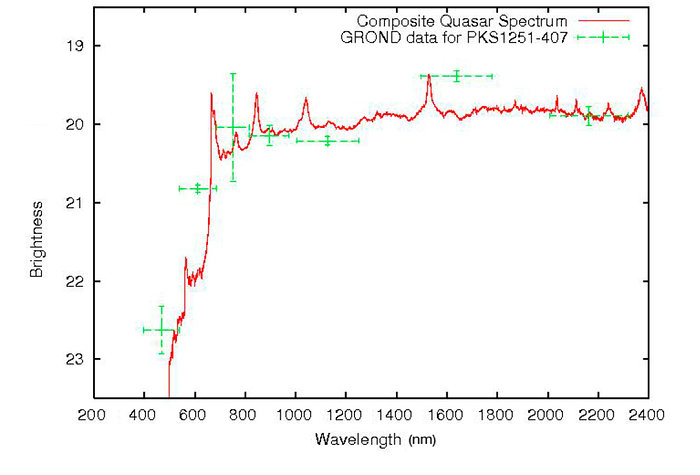The spectrum of the quasar PKS 1251-407
The spectrum of the quasar PKS 1251-407 (in red) is compared to the observations done by GROND in the seven different passbands (in green). The close agreement between the GROND data and the spectrum shows the strength of the photometric redshift technique. The large decrease in the flux in the blue part of the spectrum (around 500 nm) is the so-called Lyman drop-out and is what allows to determine the distance of the object. In this case, the Lyman-alpha line of atomic hydrogen (rest wavelength 121.6 nm) is observed at around 660 nm, i.e. in the red spectral region, indicating a redshift of 4.46, or a distance of 12.3 billion of light-years. Light from this object started its long journey towards us less than 1.4 billion years after the Big Bang.
Oikeudet:ESO
Kuvasta
| Tunnistus: | eso0730c |
| Tyyppi: | Havainto |
| Julkaisupäivä: | 6. heinäkuuta 2007 |
| Vastaavat julkaisut: | eso0730 |
| Koko: | 953 x 646 px |
Kohteesta
| Nimi: | PKS 1251-407 |
| Tyyppi: | Early Universe : Galaxy : Activity : AGN : Quasar |
| Etäisyys: | z=4.46 (punasiirtymä) |
| Kategoria: | Cosmology Quasars and Black Holes |
Värit ja suotimet
| Kaista | Teleskooppi |
|---|---|
| Infrapuna | MPG/ESO 2.2-metre telescope GROND |
| Optinen | MPG/ESO 2.2-metre telescope GROND |
